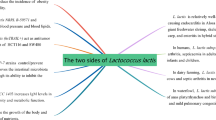Abstract
The activities of the disaccharidases lactase, maltase, sucrase and trehalase were examined in gerbils duringGiardia lamblia infections. In a primary infection with trophozoites, the activities of all four enzymes were reduced from day 10 post-infection (p.i.) and remained at low levels well past the elimination phase of the infection. However, during a challenge infection, the disaccharidase decreases were short-lived, with impairments being seen only on days 2 and/or 4 post-challenge (p.c.). Sucrase activity was not affected by a challenge infection. When 0.1 mg of a soluble extract ofG. lamblia trophozoites was used to challenge gerbils previously exposed to the live parasite, the pattern and duration of enzyme deficiencies were comparable with those observed after the challenge with the live parasite. In addition, decreasing the extract dose used to challenge the gerbils led to smaller disaccharidase deficiencies.G. lamblia-infected gerbils were also challenged with a soluble extract ofEntamoeba histolytica trophozoites, and this had no effect on the disaccharidase activities. Therefore, the presence of the intact parasite was not necessary to induce enzyme reductions in immune animals. In addition, the effects seen during the secondary infection were parasite-specific and may have involved the host's immune response toGiardia antigens. Immune gerbils were further challenged with the in vitro-released excretory/secretory products ofG. lamblia. Under our experimental conditions, disaccharidase activities were found to be affected by these products in a manner that was inconsistent with the results of the live parasite challenge, and this merits further study.
Similar content being viewed by others
References
Adam RD (1991) The biology ofGiardia spp. Microbiol Rev 55: 706–732
Belosevic M, Faubert GM (1983)Giardia muris: correlation between oral dosage, course of infection and trophozoite distribution in the mouse small intestine. Exp Parasitol 56: 93–100
Belosevic M, Faubert GM, Croll NA, Maclean JD (1982)Giardia lamblia: axenic growth in autoclaved and filtered Diamond's TYI-S-33 medium. Can J Zool 60:1673–1675
Belosevic M, Faubert GM, Maclean JD, Law C, Croll NA (1983)Giardia lamblia infections in Mongolian gerbils: an animal model. J Infect Dis 147:222–226
Belosevic M, Faubert GM, Maclean JD (1989) Disaccharidase activity in the small intestine of gerbils (Meriones unguiculatus) during primary and challenge infections withGiardia lamblia. Gut 30: 1213–1219
Brasitus TA (1983) Parasites and malabsorption. Clin Gastroenterol 12: 495–510
Buret A, Gall DG, Nation PN, Olson ME (1990) Intestinal protozoa and epithelial cell kinetics, structure and function. Parasitol Today 6: 375–380
Buret A, Hardin JA, Olson ME, Gall DG (1992) Pathophysiology of small intestinal malabsorption in gerbils infected withGiardia lamblia. Gastroenterology 103: 506–513
Chávez B, Knaippe F, Gonzalez-Mariscal L, Martíez-Palomo A (1986)Giardia lamblia: electrophysiology and ultrastructure of cytopathology in cultured epithelial cells. Exp Parasitol 61: 379–389
Craun GF, Jakubowski W (1987) Status of waterborne giardiasis outbreaks and monitoring methods. In: Tate CL (ed) Proceedings of the international symposium on water related health issues. American Water Resources Association. Bethesda, Maryland, pp 167–174
Dahlqvist A (1968) Assay of intestinal disaccharidases. Anal Biochem 22: 99–107
Dahlqvist A, Semenza G (1985) Disaccharidases of small-intestinal mucosa. J Pediatr Gastroenterol Nutr 4: 857–865
Daniels CW, Belosevic M (1992) Disaccharidase activity in the small intestine of susceptible and resistant mice after primary and challenge infections withGiardia muris. Am J Trop Med Hyg 46: 382–390
Diamond LS, Harlow DR, Cunnick CC (1978) A new medium for the axenic cultivation ofEntamoeba histolytica and otherEntamoeba. Trans R Soc Trop Med Hyg 72: 431–432
Ferguson A, Gillon J, Al Thamery D (1980) Intestinal abnormalities in murine giardiasis. Trans R Soc Trop Med Hyg 74: 445–448
Goda T, Koldovsky O (1988) Dietary regulation of small intestinal disaccharidases. World Rev Nutr Diet 57: 275–329
Goyal R, Mahajan RC, Ganguly NK, Sehgal R, Gorowara S, Singh K (1993) Macrophage-mediated enterocyte damage in BALB/c mice infected with different strains ofGiardia lamblia. Scand J Gastroenterol 28: 845–848
Guy RA, Bertrand S, Faubert GM (1991) Modification of RPMI 1640 for use in in vitro immunological studies of host-parasite interactions in giardiasis. J Clin Microbiol 29: 627–629
Hartong WA, Gourley WK, Arvanitakis C (1979) Giardiasis: clinical spectrum and functional-structural abnormalities of the small intestinal mucosa. Gastroenterology 77: 61–69
Jennings W, Rowland R, Hecker R, Gibson GE, Fitch RJ, Reid DP (1976) The significance of lower jejunal disaccharidase levels. Aust NZ J Med 6: 556–560
Khanna R, Joshi K, KumKum, Malik AK, Vinayak VK (1990) An ultrastructural analysis of changes in surface architeture of intestinal mucosa followingGiardia lamblia infection in mice. Gastroenterol Jpn 25: 649–658
Launiala K (1968) The effect of unabsorbed sucrose and mannitol on small intestinal flow rate and mean transit time. Scand J Gastroenterol 3: 665–671
Lewis PD Jr, Belosevic M, Faubert GM, Curthoys L, Maclean JD (1987) Cortisone-induced recrudescence ofGiardia lamblia infections in gerbils. Am J Trop Med Hyg 36: 33–40
Lowry OH, Rosebrough NJ, Farr AL, Randall RJ (1951) Protein measurements with folin phenol reagent. J Biol Chem 193: 265–275
Mowat A McL, Ferguson A (1981) Hypersensitivity reactions in the small intestine. 6. Pathogenesis of the graft-versus-host reaction in the small intestinal mucosa of the mouse. Transplantation 32: 238–243
Nash TE, Gillin FD, Smith PD (1983) Excretory-secretory products ofGiardia lamblia. J Immunol 131: 2004–2010
Ravich WJ, Bayless TM (1983) Carbohydrate absorption and malabsorption. Clin Gastroenterol 12: 335–356
Smith PD, Gillin FD, Spira WM, Nash TE (1982) Chronic giardiasis: studies on drug sensitivity, toxin production and host immune response. Gastroenterology 83: 797–803
Wilson HSP, Stauffer SJ, Walker TS (1982) Waterborne giardiasis outbreak — Alberta. Can Dis Weekly Rep 8: 97–98
Wright SG, Tomkins AM (1977) Quantification of the lymphocyte infiltrate in jejunal epithelium in giardiasis. Clin Exp Immunol 29: 408–412
Yardley JH, Takano J, Hendrix TR (1964) Epithelial and other mucosal lesions of the jejunum in giardiasis. Jejunal biopsy studies. Bull Johns Hopkins Hosp 115: 389–406
Author information
Authors and Affiliations
Rights and permissions
About this article
Cite this article
Mohammed, S.R., Faubert, G.M. Disaccharidase deficiencies in Mongolian gerbils (Meriones unguiculatus) protected againstGiardia lamblia . Parasitol Res 81, 582–590 (1995). https://doi.org/10.1007/BF00932025
Received:
Accepted:
Issue Date:
DOI: https://doi.org/10.1007/BF00932025




